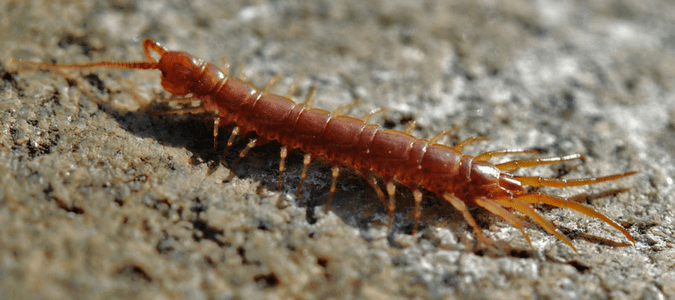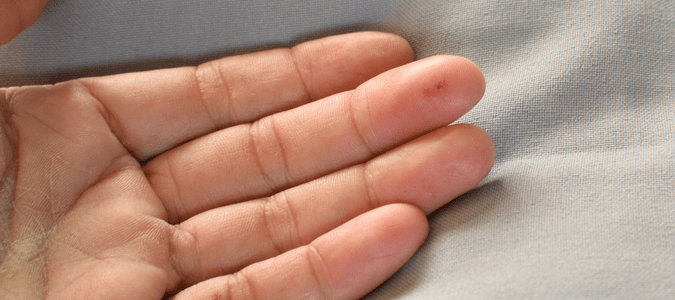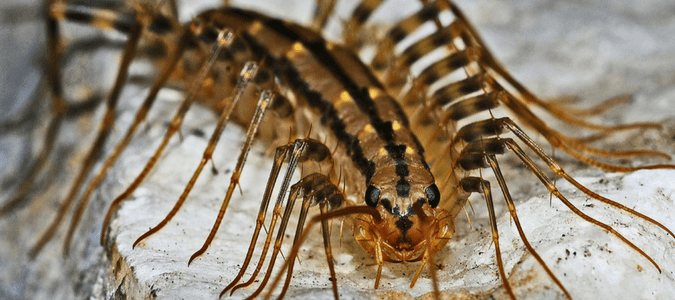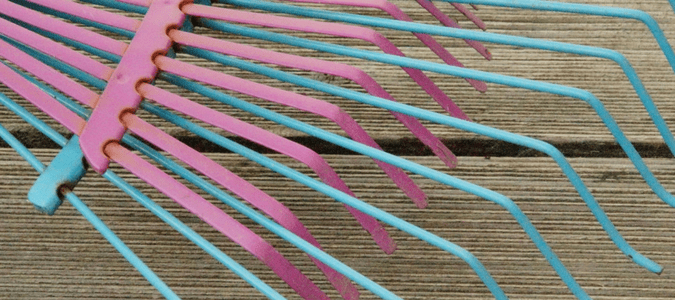
You wake up in the middle of the night. Thirsty, you head to the restroom to get a drink of water.
Then it happens—you feel something skitter over your foot. Immediately you kick it off and flip on the light, only to see a creature out of your nightmares speed across the bathroom floor and disappear into a pile of clothing.
It was long and flat but with long legs—almost like a spider. It had way more than just eight legs. There were dozens, at least. They were everywhere.
A centipede, you guess, but not like any centipede you’ve ever seen before. You want it out. But is it dangerous? Poisonous? Will it bite you? Infect you with something? Is there a nest of hundreds of them somewhere in your home?
Unlike ants, spiders, roaches, mosquitoes, and many other types of insects, most people don’t have run-ins with centipedes regularly. Because of this, it can be even more frightening when we do since we’re not sure what to expect.
How often do you need a run-in with a centipede to have a problem, though? That’s the question, and the best way to answer it is to learn about these fascinating (and, yes, sometimes frightening) creatures.
Below, we’ll answer all your most pressing questions, so you’ll be better prepared the next time you cross paths with a centipede—either outside or in your home.

Do Centipedes Bite People?
The answer to this is technically no, but essentially yes.
How can both be true?
Centipedes can and will attack people if they feel threatened, and their attack feels like a bite or a sting. Notice we said they can “attack.” What they do is neither a bite nor a sting.
So, how exactly do centipedes hurt people? By using a highly-modified pair of legs called forcipules that work like pincers. These pincers grab and pinch the skin, breaking through it.
This attack feels more or less like a bee sting for smaller centipedes. Generally speaking, the larger the centipede, the worse the pain.
It’s also essential to know that some centipedes have sharp claws on their walking legs, which can cut into human skin. Ouch!
We hate to say it gets worse, but there’s more.
Are Centipedes Poisonous?
This one is a resounding yes. All species of centipedes inject venom with their pincers when they attack. This venom accounts for most of the pain you feel after being struck by a centipede.
The good news is that no centipede has deadly venom to humans, but that doesn’t mean there are no symptoms. While most people only suffer pain and swelling that recedes relatively quickly, it is possible to experience:
- Anxiety
- A burning sensation
- Headaches
- Itching
- Lymph nodes that are painful and swollen near the bite
- Necrosis of the skin
- Palpitations
- A racing pulse
- Redness
- Vomiting or nausea
In addition, there have been cases where seniors, children, or someone with a weakened heart have suffered a heart attack after encountering a giant centipede and neglecting to pursue treatment. In full disclosure, one or two people die each year after being attacked due to an allergic reaction to the venom.
Remember how we mentioned that some centipedes have legs that can cut you? It’s also possible to get poisoned that way because there is poison at the attachment point of the legs.
Do You Need To Worry About Centipede Attacks?
If the above sounds scary to you, you’re not alone. You might be wondering whether you should take steps to avoid centipede attacks.
As we already mentioned, centipedes will only attack if they feel threatened. That means you would have to stumble upon one in a pretty literal sense of that word or find one and decide to harass it to get in trouble.
That being said, “harassment” can consist of attempting to trap a centipede to get it out of your house or even just picking it up to get a better look (note: never do this!), so take care if you choose to take matters into your own hands (especially if you do so literally!).
By not making an active decision to go after a centipede, your chances of being attacked are low to medium since most species tend to live under rocks, logs, or other dark, damp places outside. Because of this, you want to take care when cleaning up out or doing gardening. If you disturb a centipede without realizing it, an attack might result.
Beyond this, every once in a while, an outdoor centipede might wander indoors. However, it’s pretty rare, and they typically don’t stay.
The exception is the variety of centipede we described in the introductory story: the house centipede. While here in the warmer climate of the south, they can be found indoors and outdoors; these creepy critters love to make their house your home and prey on any other bugs hanging around. They’re worth worrying about because you’re more likely to come into contact with them.
It’s also worth learning more about some of the larger species in the area because—as we mentioned—their attacks tend to hurt more. 
Types Of Centipedes Southern Homeowners Should Know About
Homeowners in the southern states should be aware of three main types of giant centipedes: the house centipede, the Florida blue centipede, and the Texas read-headed centipede.
House Centipede
We’ve already written about this, but it’s worth going into more detail since these are the centipedes you’ll most likely encounter inside your home. This variety of centipede is pictured above, although, in reality, this term is attached to several different species.
Like all centipedes, these creatures prefer dark and wet, so house centipedes tend to be found in bathrooms, kitchens, basements, or other damp nooks. They’re particularly fond of drains in baths and sinks. These types of centipedes grow to about one to one and a half inches in length, and their bodies are black and either yellow or white. Despite their name, they have only 15 pairs of legs but are swift on those legs.
House centipedes are beneficial because they prey on other bug pests, such as roaches and flies. Moreover, many of them are too small to break human skin even if they do attack. However, that may not matter much to you if you wake up to find one crawling in your bed or jump 10 feet in the air when one peeks out of your drain as you’re getting ready to bathe.
Florida Blue Centipede
This species, also known as the eastern bark centipede, can be found in the southeast, including—you guessed it—in Florida. This type of centipede grows to around three inches long and is described as aggressive. Most people find Florida blue centipedes in their backyard, living under logs or rocks, but it’s not uncommon for them to seek refuge in homes after a big rainstorm.
They are greyish-blue in color—hence their name—and possess both pincers and venomous legs that can cut you. This is an example of a centipede whose “bite” feels more or less like a bee sting.
Texas Redheaded Centipede
A few years ago, this species became the terror of the internet when the Texas Parks and Wildlife Department posted a photo of one crawling up a broom. Why were people so scared?
Because this guy is the stuff of nightmares—at least in how it looks; first off, they’re giants in the insect world. Also known as the giant desert centipede, this variety can reach up to eight inches long in the wild. A bright red head tops its long, shiny black body, and roughly 20 pairs of yellow legs help it scurry around.
If you’re a tiny creature in the wild, you should be scared. These bugs don’t just go after insects but also lizards, frogs, and even snakes.
But while their “bites” definitely hurt and can cause other symptoms, it’s worth noting that Texas redheaded centipedes still can’t break through, say, a shoe, so for the most part, you’re safe if you’re just out hiking.
 Centipede Bite Treatment
Centipede Bite Treatment
What should you do if you are attacked?
Treatment is straightforward, unlike how you might treat other insect bites, such as sugar ant bites.
If you’ve had an unfortunate experience of having a centipede “bite” you, do the following:
Step 1: Wash the affected area with soap and water. This will help you disinfect and kill germs.
Step 2: Apply an antiseptic to the affected area.
Step 3: Apply a hot compress or ice. The hot compress is to reduce pain. However, if you are experiencing swelling, ice may be a better option because you can still use ibuprofen or acetaminophen to help with the pain.
Step 4: Use hydrocortisone cream. This will alleviate any itching that occurs.
Step 5: Watch the area for infection. If you notice pus, red streaks, or additional swelling, it’s wise to have it checked out by a medical professional.
Of course, if you start experiencing more severe side effects like heart palpitations, you need to seek medical help immediately. You may be experiencing an allergic reaction, which can be incredibly powerful.
Finally, you need to make sure your tetanus shot is up to date.

How To Get Rid Of Centipedes From Your House Or Yard
Tired of worrying about the possibility of having this uninvited guest on your property? Ready to get rid of the centipedes altogether?
Here is a list of recommendations that can help with many lawn bugs.
Manually Trap Them
Yes, they’re fast, but if you time it right, some container is all it takes to catch a centipede. After that, all left is to use a piece of paper to close off your makeshift trap and take the bug as far from your property as possible.
Unlike with, say, ants, this method is pretty effective because you usually won’t be dealing with large centipede populations. Get rid of a few, and your “infestation” should be a thing of the past.
Use Actual Traps
One of the most effective traps for centipedes is the sticky trap. These creatures may be fast, but that won’t matter if they get stuck. This method saves you the trouble of going on a centipede hunt and timing your “container trap” just right.
The downside is that sticky traps will kill any creatures unlucky enough to skitter over them and become stuck. If you’re not big into killing, this idea is a no-go.
Chemical Control
Not squeamish about killing the centipedes to get rid of them? A variety of sprays, dust, granules, and baits can poison the invaders and control the population.
Take Away Their Food Supply
What do centipedes eat? Other bugs, mostly. So, figure out what they’re feasting on and eliminate those bugs. Once you do, the centipedes will also make themselves scarce.
Remove Safe Harbors
One of the most humane ways to reduce the number of outdoor centipedes is to take away the places they hide. Get rid of any boards, compost piles, leaf piles, rocks, or trash piles you have cluttering up your space, and they’ll have to find somewhere else to stay. This is especially important to do with any damp materials. Speaking of wet, that brings us to our following recommendation.
Keep It Dry
Centipedes love the damp, remember? So, use the exhaust fans in your bathroom. Invest in a dehumidifier. Use fans. Do whatever you have to do to keep areas dry.
Seal It Up
Centipedes get into your house through cracks, crevices, and gaps around your doors, pipes, siding, windows, and wiring. You can stop this by using an expanding foam spray to close these gaps.
ABC Is The Answer To Your Pest Problems
If you’re unsure where to start, don’t have the time or energy to deal with the problem, or nothing seems to be working, consider giving ABC Home & Commercial Services a call. ABC pest control exterminators have been helping people throughout the southern states with pest problems for generations. They can deal with your pest problem, no matter what its cause.